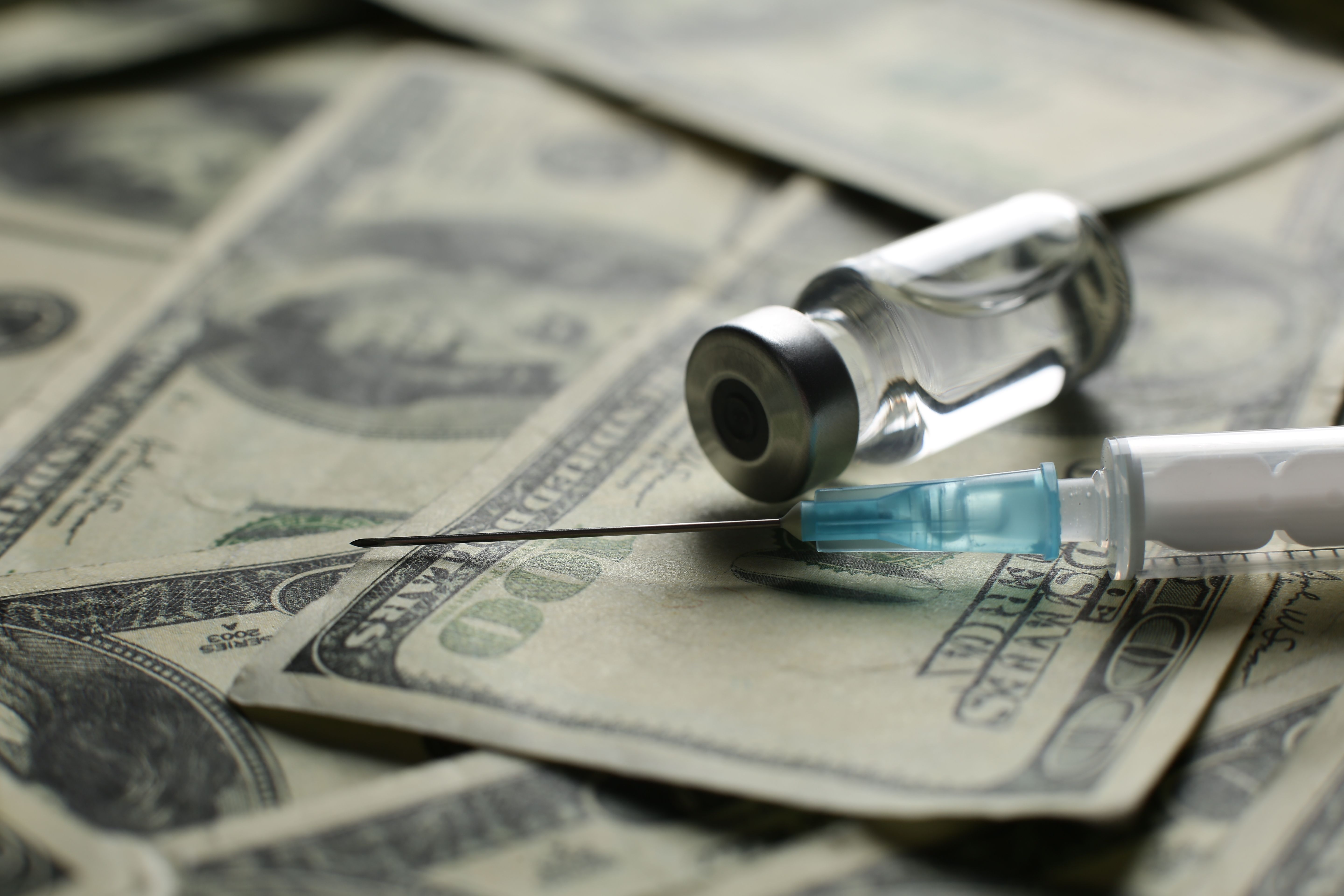- Acne
- Actinic Keratosis
- Aesthetics
- Alopecia
- Atopic Dermatitis
- Buy-and-Bill
- COVID-19
- Case-Based Roundtable
- Chronic Hand Eczema
- Chronic Spontaneous Urticaria
- Drug Watch
- Eczema
- General Dermatology
- Hidradenitis Suppurativa
- Melasma
- NP and PA
- Pediatric Dermatology
- Pigmentary Disorders
- Practice Management
- Precision Medicine and Biologics
- Prurigo Nodularis
- Psoriasis
- Psoriatic Arthritis
- Rare Disease
- Rosacea
- Skin Cancer
- Vitiligo
- Wound Care
News
Article
Can Costs and Benefits of Psoriasis Treatments Be Better Aligned?
Author(s):
Biologics to treat psoriasis can cost between $1664 and $79,277 a year in the United States, one study found, and these prices are not commensurate with clinical benefits.
Qwenergy/AdobeStock

An original investigation published online in JAMA Dermatology used the concept of the efficiency frontier (EF) as a tool to determine if psoriasis biologics are appropriately priced in the United States.1
The EF, when applied to medicine, quantifies the efficiency of a drug vs its costs to determine if the treatment is cost-effective when compared to other treatment options.
Researchers Alexander C. Egilman et al, of the division of pharmacoepidemiology and pharmacoeconomics at Brigham and Women’s Hospital in Boston, performed the investigation to assess how the EF approach could align prices and clinical benefits of biologic medications for plaque psoriasis.
Their report cites a review of international approaches to pricing prescription drugs that points out that in many countries—including Australia, Canada, France, and Germany—it is standard practice to “systematically evaluate the efficacy and safety of new medications and to negotiate prices based on a drug’s added clinical benefits compared with existing therapeutic alternatives.”2
“After negotiating prices based on these assessments, other countries generally pay less than half of the prices for brand-name drugs compared with the US,” the report states.
Egilman et al used the EF approach to compare the prices and clinical benefits of 11 biologics and 2 biosimilars for treatment of plaque psoriasis in the US and “peer countries” Australia, Canada, France, and Germany, according to their report.
The 11 biologics included adalimumab (Humira), brodalumab (Siliq), certolizumab (Cimzia), etanercept (Enbrel), guselkumab (Tremfya), infliximab (Remicade), ixekizumab (Taltz), risankizumab (Skyrizi), secukinumab (Cosentyx), tildrakizumab (Ilumya), and ustekinumab (Stelara). The 2 biosimilars were infliximab-abda (Renflexis) and infliximab-dyyb (Inflectra).
Egilman et al measured the efficacy of the 13 products using the Psoriasis Area and Severity Index (PASI) score of 90 and annual treatment cost as of January 2023 using the net of estimated manufacturer rebates. Data were collected from February 2023 to March 2023 and analyzed from March 2023 to June 2023.
Among the 13 biologics, PASI 90 response rates ranged from 17.9% (for etanercept) to 71.6% (for risankizumab).
Net annual treatment costs in the US ranged from $1,664 (for infliximab-dyyb) to $79,277 (for risankizumab).
The median net annual treatment cost for psoriasis biologics in the US ($34,965) was significantly higher than in:
- Australia ($9,179)
- France ($9,478)
- Germany ($13,829)
- Canada ($15,556)
These findings show the US spends more than 3 times as much on these biologics than do the selected peer countries.
Egilman et al concluded that US prices for psoriasis biologics would need to be reduced by a median of 71% in order to provide the same therapeutic benefit per dollar spent when compared to these countries.
“This economic evaluation showed that for plaque psoriasis biologics, using an EF approach to negotiate prices could lead to substantial price reductions and better align prices with clinical benefits,” they wrote.
“US policymakers might consider using EFs to achieve prices commensurate with comparative clinical benefits,” they suggested,“particularly for drug classes with multiple therapeutic alternatives for which differences can be adequately summarized by a single outcome measurement.”
Do you think patients pay too much for psoriasis drugs in the US? Let us know! Email our team at DTEditor@mmhgroup.com to make your voice heard.
Related Articles
Drug Price Hikes Already Found in 2023
Study: Physicians Usually Wrong When Estimating Patients’ Out-of-Pocket Drug Costs
References
- Egilman AC, Kesselheim AS, Avorn J, Raymakers AJN, Rome BN. Use of efficiency frontiers to align prices and clinical benefits of biologic therapies for plaque psoriasis. JAMA Dermatol. Published online February 21, 2024. doi:10.1001/jamadermatol.2023.6236
- Rand LZ, Kesselheim AS. An international review of health technology assessment approaches to prescription drugs and their ethical principles. J Law Med Ethics. 2020;48(3):583-594. doi:10.1177/1073110520958885
Newsletter
Like what you’re reading? Subscribe to Dermatology Times for weekly updates on therapies, innovations, and real-world practice tips.







